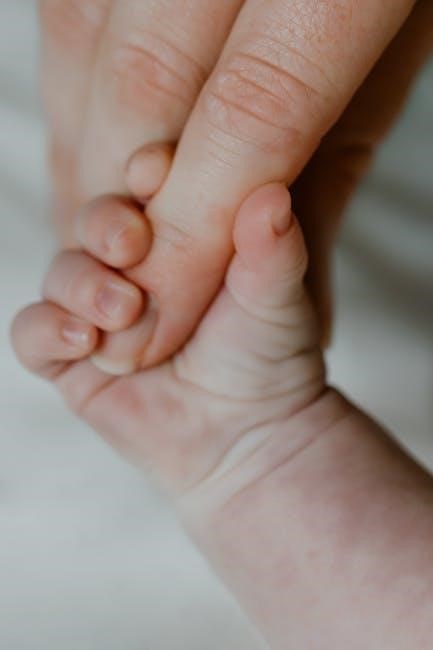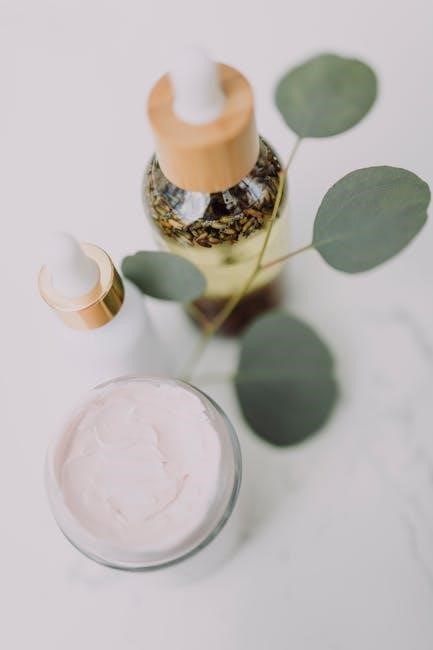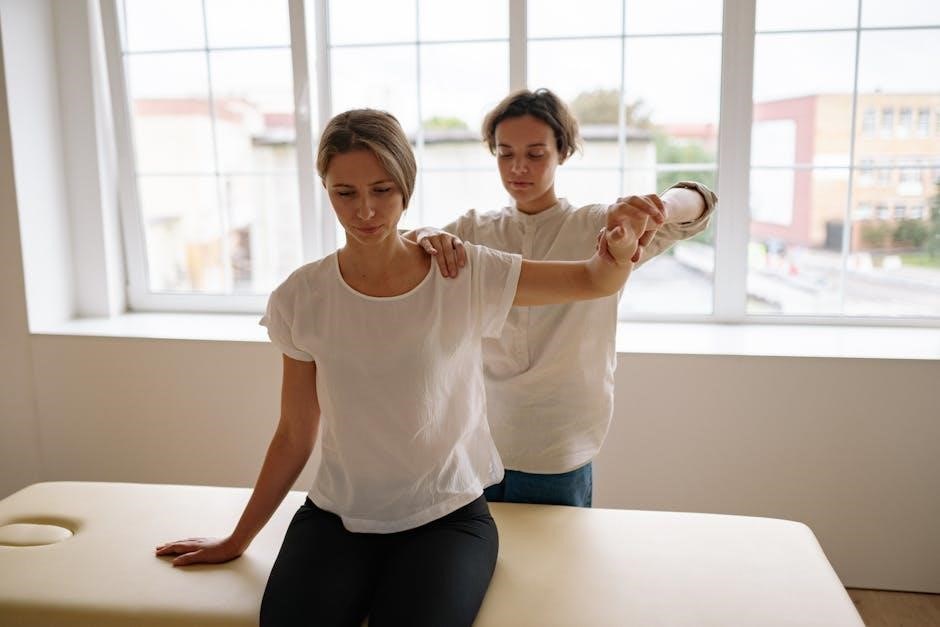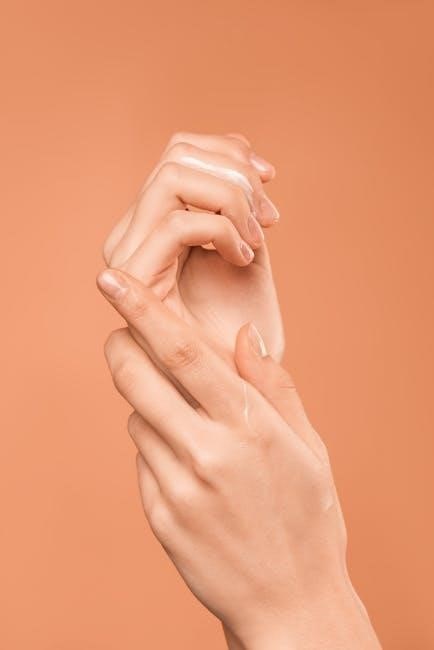This guide serves as a comprehensive resource for understanding massage gun attachments․ We’ll explore the various types available, their specific uses, and the benefits they offer for muscle recovery and relaxation․ Learn how to choose the right attachment to target different muscle groups effectively․
Massage guns have become increasingly popular tools for fitness enthusiasts and individuals seeking muscle relief․ A key component of their versatility lies in the interchangeable attachments that come with them․ These attachments are designed to target specific muscle groups and provide varying levels of intensity, allowing for a customized massage experience․
Understanding the purpose of each attachment is crucial to maximizing the benefits of your massage gun․ Different shapes and materials are used to address various needs, from deep tissue work to gentle surface stimulation․ Whether you’re an athlete recovering from a strenuous workout or someone seeking relief from everyday muscle tension, selecting the appropriate attachment can significantly enhance your massage gun’s effectiveness․
This guide will delve into the world of massage gun attachments, providing a detailed overview of the most common types and their intended uses․ We’ll explore how to choose the right attachment for specific body parts and how to properly clean and maintain them to ensure longevity․ By mastering the use of these attachments, you can unlock the full potential of your massage gun and achieve optimal muscle recovery and relaxation․
Common Types of Massage Gun Attachments

Massage guns typically come equipped with a variety of attachments, each designed for a specific purpose․ Recognizing these common types and understanding their intended uses is essential for maximizing the benefits of your massage gun․ Among the most frequently encountered attachments are the ball, flat, bullet, fork, and air cushion heads․
The ball attachment, often round and made of foam or hard plastic, is a versatile option suitable for large muscle groups like the quads and hamstrings․ The flat attachment offers a broader surface area, making it ideal for general muscle relaxation and addressing tension in areas like the back․ For pinpoint muscle treatment and smaller muscle groups, the bullet head allows you to dig deep into the tissues of areas like the hands and feet․
The fork attachment, with its two prongs, is specifically designed for targeting muscles around the spine and Achilles tendon, avoiding direct contact with bones․ Finally, the air cushion attachment provides a gentler massage experience, making it suitable for sensitive areas or individuals with lower pain tolerance․ Each of these attachments plays a unique role in providing targeted muscle relief and enhancing the overall massage experience․
Ball Attachment: Uses and Benefits
The ball attachment is arguably the most versatile and widely used massage gun head, found in almost every massage gun kit․ Its rounded shape and varying densities, from soft foam to hard plastic, make it suitable for a broad range of applications․ Primarily, the ball attachment is designed for treating larger muscle groups, such as the quadriceps, hamstrings, glutes, and even the biceps and triceps․

One of the key benefits of using the ball attachment is its ability to improve blood circulation․ The percussive therapy delivered by the massage gun helps to increase blood flow to the targeted muscles, promoting faster recovery and reducing muscle soreness․ This makes it an excellent tool for warming up muscles before exercise or easing tension after a workout or prolonged periods of sitting․
Furthermore, the ball attachment is effective for releasing muscle knots and reducing overall muscle stiffness․ Its larger surface area allows for a more generalized massage, making it ideal for addressing broader areas of tension․ By applying consistent pressure and vibration, the ball attachment can help break down adhesions and improve muscle flexibility, ultimately contributing to enhanced athletic performance and reduced risk of injury․
Flat Attachment: Uses and Benefits
The flat attachment is another common and versatile massage gun head, characterized by its flat, smooth surface․ This design makes it well-suited for working on broad muscle groups and areas where you want to distribute the massage force more evenly․ Unlike the ball attachment which offers a more generalized massage, the flat attachment provides a slightly more focused approach while still covering a substantial area․
A key benefit of the flat attachment is its effectiveness in reducing muscle tension and promoting relaxation․ The even distribution of pressure allows for a comfortable yet effective massage, helping to soothe sore muscles and alleviate stiffness․ It’s particularly useful for post-workout recovery, as it can help flush out metabolic waste products and reduce inflammation in the muscles․
Furthermore, the flat attachment can be used to improve circulation and warm up muscles before exercise․ By gently massaging the targeted area, you can increase blood flow and prepare the muscles for activity․ This can help to reduce the risk of injury and improve athletic performance․

While it’s generally safe to use on most muscle groups, it’s important to avoid using the flat attachment directly on bony areas or joints, as this can cause discomfort or injury․ Start with a low intensity setting and gradually increase the pressure as needed, paying attention to your body’s response․
Bullet Head Attachment: Uses and Benefits
The bullet head attachment, distinguished by its small, pointed tip, is designed for pinpoint muscle treatment and targeting specific trigger points․ This attachment allows you to deliver a focused and intense massage to smaller muscle groups or areas with deep-seated tension․ Its precision makes it ideal for breaking up knots and adhesions in muscles that are difficult to reach with larger attachments․
One of the primary benefits of the bullet head attachment is its ability to relieve localized pain and discomfort․ By applying direct pressure to trigger points, it can help release muscle spasms and reduce pain signals․ This makes it a valuable tool for addressing specific areas of tension, such as knots in the shoulders or tight spots in the calves․
The bullet head is also effective for working on smaller muscle groups like the hands and feet․ These areas often accumulate tension due to repetitive movements or prolonged periods of standing or walking․ Using the bullet head attachment can help improve circulation, reduce swelling, and alleviate pain in these areas․
When using the bullet head attachment, it’s crucial to exercise caution and start with a low intensity setting․ Apply gentle pressure to the targeted area and gradually increase the intensity as needed․ Avoid using the bullet head on bony areas or sensitive tissues, as this can cause discomfort or injury․ It is essential to listen to your body and stop if you experience any pain․
Fork Attachment: Uses and Benefits
The fork attachment, easily recognized by its two-pronged design, is specifically engineered for targeting muscles surrounding the spine and Achilles tendon․ Its unique shape allows it to straddle these sensitive areas without applying direct pressure on bone, making it a safer and more comfortable option compared to other attachments․
One of the primary benefits of the fork attachment is its ability to relax the muscles along the spine․ By gently massaging the paraspinal muscles on either side of the spine, it can help relieve tension, improve posture, and reduce back pain․ The fork design ensures that the massage is focused on the muscles and not on the vertebrae themselves, minimizing the risk of injury․
The fork attachment is also highly effective for treating the Achilles tendon, a common site of pain and inflammation for athletes and active individuals․ By massaging the muscles surrounding the Achilles tendon, it can help improve blood flow, reduce stiffness, and promote healing․ The fork design allows for targeted massage without putting excessive pressure on the tendon itself․
When using the fork attachment, it’s important to start with a low intensity setting and gradually increase the pressure as needed․ Move the attachment slowly and smoothly along the targeted area, avoiding any jerky or abrupt movements․ It’s also crucial to avoid using the fork attachment on bony areas or areas with acute inflammation․
The fork attachment is a versatile tool for addressing muscle tension and promoting recovery in specific areas of the body․ Its unique design makes it a safe and effective option for massaging the muscles surrounding the spine and Achilles tendon․
Air Cushion Attachment: Uses and Benefits
The air cushion attachment, also known as the pneumatic head, is designed to provide a gentler, more cushioned massage experience․ This attachment is particularly beneficial for individuals with sensitive skin, those recovering from injuries, or anyone who prefers a less intense massage․ The air-filled design helps to distribute the force of the massage gun more evenly, reducing the risk of discomfort or pain․
One of the primary uses of the air cushion attachment is for treating delicate areas of the body, such as the neck, face, and joints․ The softer impact of this attachment makes it suitable for massaging muscles close to bone or areas that are easily irritated․ It can help to relieve tension headaches, reduce jaw pain, and improve circulation in the face․
The air cushion attachment is also a good option for individuals with chronic pain conditions, such as fibromyalgia or arthritis․ The gentle massage can help to reduce pain and stiffness without exacerbating symptoms․ It can also be used to promote relaxation and reduce stress․
When using the air cushion attachment, it’s important to start with a low intensity setting and gradually increase the pressure as needed․ Move the attachment slowly and smoothly over the targeted area, paying attention to your body’s signals․ Avoid applying too much pressure, as this can negate the benefits of the cushioned design․
The air cushion attachment is a versatile tool for providing a gentle and effective massage․ Its cushioned design makes it suitable for sensitive areas of the body, individuals with chronic pain, and anyone who prefers a less intense massage experience․ It can help to relieve tension, reduce pain, and promote relaxation․
Using Attachments for Specific Body Parts
Selecting the right massage gun attachment is crucial for targeting specific muscle groups and achieving optimal results․ Different body parts require different approaches due to variations in muscle size, density, and proximity to bone․ Understanding which attachment is best suited for each area can significantly enhance the effectiveness of your massage gun therapy․
For large muscle groups like the quadriceps, hamstrings, and glutes, the ball attachment is generally recommended․ Its broad surface area allows for efficient coverage and deep tissue massage․ When working on the back, the fork attachment can be particularly useful for targeting muscles along the spine, while avoiding direct contact with the vertebrae․
Smaller muscle groups, such as those in the hands and feet, benefit from the precision of the bullet head attachment․ Its pointed tip allows for targeted treatment of knots and trigger points․ The flat attachment is a versatile option for various body parts, providing a more general massage and promoting blood circulation․
When massaging sensitive areas like the neck and shoulders, it’s essential to use a gentler approach․ The air cushion attachment can be a good choice for these areas, as its cushioned design helps to minimize discomfort․ Always start with a low intensity setting and gradually increase the pressure as needed․

Remember to avoid using massage guns directly on bones or joints․ Focus on the surrounding muscles to relieve tension and improve mobility․ By carefully selecting the appropriate attachment and adjusting the intensity level, you can tailor your massage gun therapy to meet the specific needs of each body part․
Cleaning and Maintaining Attachments
Proper cleaning and maintenance of your massage gun attachments are essential for ensuring hygiene, prolonging their lifespan, and maintaining optimal performance․ Over time, attachments can accumulate sweat, oils, and debris, which can not only harbor bacteria but also degrade the material and affect their functionality․
After each use, it’s recommended to wipe down the attachments with a clean, damp cloth․ For a more thorough cleaning, you can use mild soap and water․ Avoid harsh chemicals or abrasive cleaners, as these can damage the surface of the attachments․ Ensure that all soap residue is rinsed off completely and that the attachments are allowed to air dry thoroughly before storing them․
Some attachments may be dishwasher-safe, but it’s always best to check the manufacturer’s instructions before placing them in the dishwasher․ High temperatures and harsh detergents can potentially warp or damage certain materials․ If you’re unsure, hand washing is always the safest option․
In addition to regular cleaning, it’s important to inspect your attachments periodically for any signs of wear and tear․ Cracks, tears, or other damage can compromise their effectiveness and potentially pose a safety hazard․ If you notice any damage, it’s best to replace the attachment immediately․
Proper storage is also crucial for maintaining the condition of your massage gun attachments․ Store them in a clean, dry place away from direct sunlight and extreme temperatures․ Consider using a dedicated storage case or bag to protect them from dust and damage․ By following these simple cleaning and maintenance tips, you can keep your massage gun attachments in top condition and enjoy their benefits for years to come․

Leave a Reply
You must be logged in to post a comment.